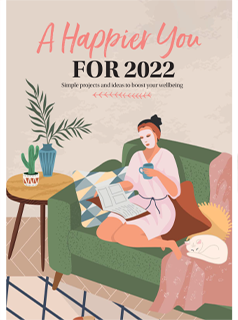Develop your life story and improve your relationships with this soul-searching guide from Jane Bailey Bain
Develop your life story and improve your relationships with this soul-searching guide from Jane Bailey Bain ,into natural health and organic food ? If so, you need a hungry urchin to feed. Social pressure means that some roles are unacceptable: a princess must be nice although she might feel moody. Economic factors may limit the props you can buy: Cinderella can’t afford a ticket to the ball. But actually,you have more control over your story than you think. Ultimately the only limiting factor is your own imagination. Cinderella can volunteer for the charity committee; the princess can take up kick-boxing to work out her aggression! Problems arise when you don’t make conscious choices, because then you’re actually deciding by default. The trick is to become aware of this process. You don’t have to be a victim of circumstances. Start to believe that change is possible, and amazingly, you’ll find that it is.
Choosing your character
Often we base our self-image on a story we have heard. We identify with the main character and decide to be like him or her. The tales we hear in childhood are especially influential. Little boys want to be Jack the Giant Killer; big boys want to be a Prince. Little girls dream of being Beauty; grown-up girls still love the Beast. The characters in children’s stories are often very similar. We recognise them easily: the princess and the hero, the clever girl and the witch. These familiar figures reappear in myths and folktales from around the world: they are called archetypes.
At this point, warning bells should start to ring. What does that mean? Surely we don’t need a character description of everyone we meet? It’s all very well in a story, but surely in real life everyone is different? Absolutely right, and that is where the danger lies. We all have a natural tendency to categorise people using stereotypes. It’s all too easy to believe that these universal ‘types’represent real people. Archetypes help us to recognise common characteristics; they don’t tell us about an individual’s personality. Human beings are much more complex than that. Even with people we know well,it’s important not to let our expectations affect our perceptions. In healthy relationships, we give others the opportunity to change and grow.
In fact, all of us have the potential to act any way we want. We can choose the figure we wish to identify with. Equally, we can modify that image when it is no longer helpful. Maybe you’re tired of mothering everyone;maybe it’s time now for a little space and self-indulgence.
ARCHETYPE FIGURES
When we interact with other people, we tend to identify them with universal figures called archetypes . Here are some of them…
Female
YOUNG
PRINCESS – Pretty but passive. She is defined by her demeanour, not her crown.She manifests the transition from innocence to maturity. But she may not want to be indebted to her hero. The princess in each of us reflect an internal state of expectancy. To thrive,channel your dreams into a source of life energy.
CLEVER GIRL – Looks after herself. She makes her own way in the world. Life may be tough at times but she will always look to a happy ending. A clever girl can be a threat and often they do not reveal the full extent of their powers.
MATURE
GOOD MOTHER – Caring for others. Indisputably feminine, yet fierce in defence of those in her care. Mothers are the source of succour, but they must also introduce us to discipline. It’s a fine balancing act between nurturing others and smothering them.
WILD WOMAN – Wants to have fun. These women run with the wolves and retain their sexual identity. They laugh,love and live life to the full but may also be searching for deeper personal fulfilment. The good mother may be a pillar of the community but the wild woman is far more interesting.
OLD
GRANDMOTHER – Gentle and supportive. Gentle and kindly, she is a constant source of sympathy and support,someone who everyone feels will listen to them.She is usually treated with respect, but sometimes and on some matters, her opinions may be out-of-date.
WICKED WITCH – Clever old crone. On close encounters, the witch is not so alarming.Her age gives her life experience and although she is portrayed as wicked, sometimes it’s a ploy to test those around her before she lets down her guard and reveals her inner worth to them.
Male
YOUNG
PRINCE – Destined for big things. The prince is representing natural simplicity and spontaneity. Living in the present and looking forward,he is admired and it is his conduct that will lead to recognition.
URCHIN – Cheeky opportunist. He has to survive by his natural wit and luck. The urchin is usually a good-natured, creative and carefree type. He is also very resourceful and sees the mistakes he makes in life as an opportunity to learn and grow.
MATURE
HERO – Honourable champion. Heroes are aspirational andsuccessful. The difficulty forthe modern hero isreconciling his virility withhis sensitive side. He isexpected to have feelingsbut not to show fear. T
TRICKSTER – Wily and cunning. A comic who appeals to the anarchist in us all. He is the joker and natural rebel.He is greedy, selfish and lustful but in spite of this,good often comes from his actions. His jests and humour are often a cover for his unpalatable insights.
OLD
WISE MAN – Sage and mentor. He’s always on hand with good advice. He may not always be listened to but should realise that ultimately everyone is responsible for their own actions.
OGRE – Dark and malevolent. It is our own fear that gives the ogre his power.Rather than ascribing these negative feelings onto someone who’s different by turning and facing the monster we will find that he is not scary after all.
Know yourself…
Who’s who in your relationship?
For this exercise you will need a pen and paper.
On the left-hand side of the page, write down the archetype figure you most identify with.Underneath, list the attributes of that character. Include all the traits which are meaningful for you, for example the princess might be sensitive, helpless…
On the right-hand side of the page, write the name of your lover or best friend. Underneath,note the archetype figure whom they most remind you of. List the attributes which that character represents to you, for example,daring, impulsive…
Take your first attribute: decide which of your partner’s attributes balances that trait. Draw a line linking the two words. Repeat this with each of your attributes.
Look at the diagram you have created. How do you feel about these patterns of behaviour? Are your interactions positive or negative? Is there another archetype figure you would prefer to identify with?
Picture this…
Visualisation is a powerful tool for personal growth.
To change the character you identify with, try this simple exercise:
Sit in a quiet place where you can relax without any distractions.
Picture yourself as you are now. What are you wearing? How are you feeling? Think of a word to describe yourself. How do you feel about that label?
Now think of the person you would like to be.Form an image of this in your mind.
Look at this figure. What is she wearing? What do these things mean to you?
Tell yourself that this figure represents another part of you. Move towards the image and step into that space. Become one with this new figure.
Now you are inside the figure. How do you feel? What can you see? How do you stand and move? What feels good about being this character?
Think of a word to describe this new sensation.This is your anchor. When you want to feel and act in this way, recite the word in your head like a mantra.
Article by
Jane Bailey Bain
Author
Jane Bailey Bain is the author of LifeWorks
Discover more
Article by
Jane Bailey Bain
Author
Jane Bailey Bain is the author of LifeWorks
Discover more























